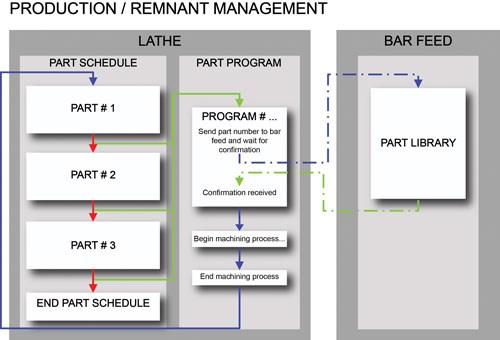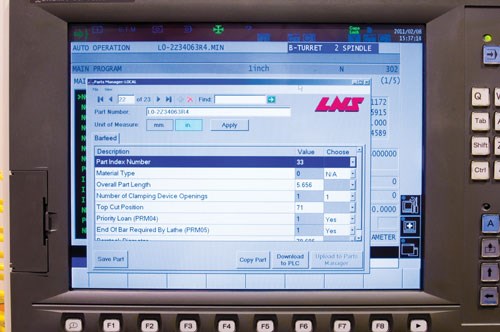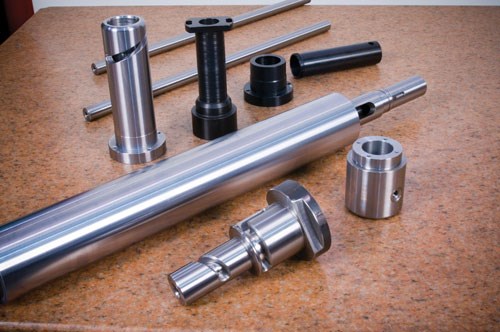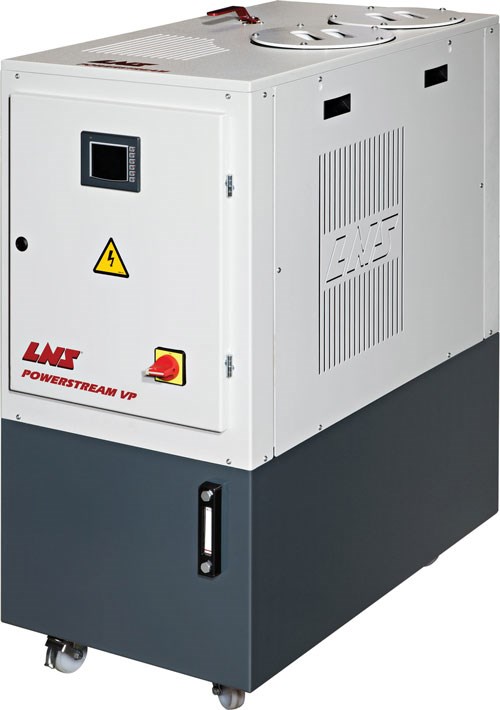Shopfloor Data and the Future of Manufacturing
Redundancy is far too common in many areas of life. Standardized processes that streamline production might be the perfect solution.
As anyone who has recently dealt with the health care system knows, doctors, hospitals and other providers must gather a seemingly unending stream of information from each patient. It seems that every visit requires the patient to fill out reams of paper forms, much of it with the same information that was provided in previous visits. And if that isn’t annoying enough, when the doctor refers the patient to a hospital for any reason, many of the same questions must be addressed again, and often more than once within the same facility.
Now, no one disputes the importance of these health care providers having good information before treating a patient, but why all of the redundancy? One answer is that the medical community, financial institutions and many other enterprises have been struggling to improve their information systems for decades with limited success. The chief problem is that a seemingly infinite number of legacy software systems exist that simply can’t communicate with one another. For years, these institutions relied on proprietary operating systems and custom database software that met their unique requirements, but are now incompatible with other systems with which they need to share data. So patients or customers become annoyed, and important details may be lost in the transition.
Manufacturing companies also need good information to continuously improve their processes, monitor the health of their CNC machines, maximize tool wear, adjust for thermal and other environmental changes, optimize material usage, maintain standards of quality and more. Formalized gathering and analysis of manufacturing data began in the 1920s when Bell Laboratories developed the basis for statistical process control. Since then, the ability to gather data from machine tools and peripherals has increased exponentially. However, while acquiring large amounts of data from a shopfloor device may enable manufacturers to improve a discrete process, the greater benefit lies in the ability to share that data with other production components and a central control system.
A Solution for Manufacturing
Fortunately, unlike other industries that must wrestle with data system incompatibilities, manufacturing has a unique advantage in MTConnect. This connectivity tool is, essentially, a common translator based on Internet standards that enables CNC and non-CNC machine tools and other shopfloor equipment to communicate with each other’s software, along with that of a central production monitoring system.
One company that embraces the concept of data sharing is Cincinnati-based LNS America, which produces bar feeders, chip and coolant management systems, vacuum unloaders, workholding devices and air filtration systems. As Software and Systems Control Manager Randy Lewis explains, “Our mission is to help machine tool customers get the most value from their CNC machines and to optimize the efficiency of their manufacturing operations. To do this, we continuously improve the mechanics, electronics and other hardware technologies of our products. Several years ago, we recognized that by enabling our various products to communicate with the CNC machine tools they work with, we could improve the customer’s productivity even more. And by interfacing with the overall manufacturing control system, we add even greater value through our e-Connect system, which is a multi-functional Ethernet communications platform capable of communicating with many different protocols and systems.”
Facilitating Communication
The e-Connect system provides a number of opportunities to utilize real-time data for greater process control. When linked to the factory network, for example, if the bar feeder senses a problem and triggers an alarm, e-Connect automatically sends the fault notification via email to authorized PCs or mobile devices for instantaneous analysis and response. By conveying this precise information to offsite experts, companies reduce downtime, travel time and other expenses. Most important, this instant notification allows the manufacturer to quickly check the production line, which can be especially valuable during unattended operations.
Perhaps one of the greatest advantages of the e-Connect system is the ability to share real-time data between the CNC controller and an LNS bar feeder while using the LNS parts library function. The parts library can store 500 parts programs, each of which has a unique identifying number. Through the e-Connect system, the bar feeder automatically detects the part program currently in use by the lathe and loads the correct setup data for that part from the parts library to change-over on the fly without operator intervention, thereby eliminating downtime. This processing of information enables the manufacturer to run a large family of parts, or even a group of unrelated parts with little or no operator involvement after the initial setup. While this is a boon during daytime shifts, it’s especially useful when running lights out.
Beyond this ability to save operator time and throughput, e-Connect can also significantly reduce material costs by utilizing the capabilities of the data transfer function that enables the bar feeder to continuously tell the machine tool how much barstock is available for machining. After each part is machined, the CNC machine tool’s production scheduling program checks the remaining parts to be produced and determines if there is adequate barstock available for the next scheduled part to be made. If not, the system scans the production list for another part that could be made from the remaining material. Manufacturers can even set priorities for each part in the schedule, in which case the system identifies the highest priority part that can be machined from the remaining barstock.
The machine tool’s production scheduling program then loads the appropriate part program to the lathe. The bar feeder recognizes the new program, recalls the associated part data from the parts library and automatically changes over to the new configurations. If the new part requires a change in barstock diameter or profile, e-Connect can send an email message to a remote computer or mobile device, alerting that a mechanical adjustment is required.
If the system determines there is no part in the schedule that can be made from the remaining stock, the remnant is ejected, and the system confirms the next part to be made, makes any adjustments necessary, and the next bar loads into the bar feeder. All of these communications between the LNS bar feeder, the machine tool and the production scheduling program are virtually instantaneous and require no operator assistance.
Applying the Technology
One LNS customer who benefits from this material-savings aspect of e-Connect is A. Y. McDonald Manufacturing Co. (Dubuque, Iowa), which makes submersible water pumps with pumping rates that range from 5 to 90 gallons per minute. These pumps require 80 different lengths of pump shafts that must be machined to precise tolerances. The shafts are made from 48-inch long, hexagonal, stainless steel bars. Before the customer added an LNS automatic bar feeder equipped with e-Connect, the machine operator needed to pull the barstock into position for each new part. This added labor costs to the part. It also provided an opportunity for operator error, such as a shaft cut to the wrong length. Additionally, when the operator failed to remove a finished part, the machine would crash, damaging parts, tools and fixtures.
The e-Connect system eliminated these problems. The data transfer function enables the bar feeder to continuously tell the machine tool how much barstock is available for machining. Meanwhile, the bar feeder automatically detects the part program currently in use by the lathe and loads the correct setup data for that part from the parts library with no operator intervention.
According to the company’s production manager, adding the e-Connect system and bar loader saves 15-30 minutes setup time and prevents what were weekly turret crashes that added 4 to 8 hours of downtime. Material savings are also significant, and because it can now make the pump shafts as needed for each day’s production, the company no longer has to maintain a large inventory of the various sized shafts, which reduces work-in-process costs.
In another application, e-Connect is used with a seven-axis, twin spindle CNC machining center, an LNS automatic bar feeder and a vacuum unloader to produce a family of precision stainless steel cylindrical parts for flexographic press maker, Nilpeter USA Inc. (Cincinnati, Ohio). Each of the eight parts must be machined to final diameter tolerances of ±0.00005 inch, and each has slightly different diameter dimensions, ranging from 2.2621 inches through 2.2618 inches. Prior to installation of this machining cell, each part required 4.5 labor hours to produce. Now each part is completed in 30 minutes, and, thanks to the versatility of the data transfer and parts library functions, the cell processes more than 40 parts while optimizing barstock usage and reducing waste. In addition, the company can set up the part production schedule and monitor the entire cell remotely. Designated PCs receive alerts when problems arise.
Taking it Further
A recent addition to the LNS product line is the PowerStream VP (Variable Pressure) high pressure coolant delivery system, which also uses e-Connect to solve a number of problems inherent in high pressure coolant machines. PowerStream VP enables users to program as many as eight high pressure outlets. Any one of these outlets can then deliver as much as 2,000 psi of filtered coolant as needed. Users can set the precise amount of coolant pressure in increments of 1 psi within a 100 to 2,000 psi range, to be delivered automatically for each stage of a machining process in the part program. They can also make pressure changes on the fly during a production cycle.
While the high pressure system has a self-contained, user-friendly control system for programming and monitoring activities, conversations with machine tool customers led to the development of an e-Connect interface that enables users to program and monitor the delivery of high pressure coolant through the CNC machine controller. The interface also provides filter change alerts and the ability to troubleshoot any issues that may arise. Typically, these data are only available on a high pressure unit’s on-board display, and since these units are usually buried behind the machine tool, they are often inaccessible. Currently this e-Connect interface is only available for the Okuma THINC OSP control system because it is equipped with a touchscreen that makes it easy to use. However, LNS is working with other machine tool OEMs as well.
For the Okuma OSP, the e-Connect system uses a single Ethernet connection from PowerStream VP to the machine tool control that allows for quick and easy installation of the interface in about 15 minutes, versus 8 hours or more to set up and program non-Ethernet connected devices. Additionally, the e-Connect interface eliminates setup inconsistencies because installers simply follow the menu-driven procedures. Data from the high pressure system is pushed directly to the Okuma OSP, so Okuma’s MacMan-net data system can then share this information to a central monitoring system.
The End Result
As these few examples demonstrate, enabling the various machines and peripherals within a manufacturing facility to communicate with one another can have important benefits beyond simply gathering data for reporting purposes and receiving trouble messages and maintenance alerts. While these functions are important, the ability to optimize machine performance, reduce labor costs, maximize material usage and minimize inventories can significantly improve productivity and profitability.
While true “plug-and-play” connectivity between various makes and types of equipment is not yet a reality, tools like MTConnect and LNS-developed e-Connect can help manufacturers move in the right direction.
Related Content
Hack-Proof Your Shop: Production Machining’s 6 Must-Read Cybersecurity Articles
October is cybersecurity awareness month and Production Machining wants to help you make your shop hack-proof.
Read MoreDatanomix Automated Production Intelligence Platform for ProShop ERP Software
PMTS 2023: Automated Job Costing analytics compare ProShop ERP target cycle times to actual process performance in the Datanomix Automated Production Intelligence Platform.
Read MorePrecision Machining Technology Review: November 2024
Production Machining’s November 2024 technology showcase includes some of the latest technology from Vericut, Hurco, the L.S. Starrett Co., LNS North America, Fryer Machine Systems and MachineMetrics.
Read MoreAvoid the 7 Deadly Sins of Manufacturing
Identifying and preventing these manufacturing sins will reduce or eliminate unnecessary waste, improve efficiency and productivity as well as protect profitability and cash flow.
Read MoreRead Next
Maximize Machine Tools with MTConnect
One of the highlights of this week’s MC2 conference was the introduction of this video, which features Joel Neidig, technology manager at ITAMCO. He talks about how machine monitoring and other MTConnect-enabled technologies have benefited this north central Indiana job shop.
Read More5 Aspects of PMTS I Appreciate
The three-day edition of the 2025 Precision Machining Technology Show kicks off at the start of April. I’ll be there, and here are some reasons why.
Read MoreA Tooling Workshop Worth a Visit
Marubeni Citizen-Cincom’s tooling and accessory workshop offers a chance to learn more about ancillary devices that can boost machining efficiency and capability.
Read More



















.jpg;maxWidth=300;quality=90)







